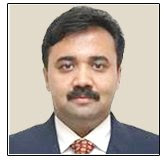A pertinent and thought provoking article with a style that is unique to the writer Raj Machan, member Cellebrum Business Development Team.
As of now, we do not have any clear answers to this one. But what we know for sure is that technology is moving forward, and it is moving at an unprecedented pace. The speed of development is something like compressing the entire industrial revolution into a span of two decades. Take cellular telephony: Essentially a phenomenon of the 90s, the technology has proliferated at such a pace that now it is hard to imagine life without the ubiquitous ‘cell’ or ‘mobile’, two words which are now as much a part of the common lexicon as food, water, jeans, tops, or for that matter the new babe in town. The constant drop in prices of cell phones is an indicator: Your swanky handset, which you purchased for Rs 20,000 this Diwali, will be available for Rs 15,000 or less in March-April 2009, if at all. Because chances are high that your precious gizmo would have been phased out by a new crop of superior models packed with new features and applications and available for less. The Indian market is already flooded with inexpensive, feature-rich (including advanced applications such as Television on Mobile) mobile phones, made in China and available for as little as Rs 5000!
The following factors are set to further cement the pre-dominance of mobile technology:
Convergence
Wireless technology now lies at the core of convergence of technologies. Convergence denotes the use of a single gadget or application for accessing two or more technologies. For quite some time now, the IT sector has focused on convergence of multiple technologies deployed in the areas of Information, Communication, and Entertainment (ICE). Senior executives with telecom major Spice Group affirm that the wireless medium has an inherent advantage over its fixed counterpart and is clearly the future. The cell phone has transformed from a hardware intensive device to an intelligent software-driven platform – very much on the lines of your personal computer. You can take a picture (camera phones have now almost wiped off the good old film rolls from shop shelves), record a video clip, store, transfer and listen to your favorite songs (the runaway success of Apple’s iPhone is an indicator of the widespread acceptability of music phones), watch a movie, get the latest scores, stock prices, chat with friends, send messages, hold a conference call, play games, use it as a calculator or an organizer and of course make or receive a call if you still have the time. You could do all this out trekking in a remote area of Himachal Pradesh or waiting for your sweetheart on the bench by the lake.
Smartphones
Roughly the cellular equivalent of a Personal Digital Assistant (PDA), the smart phone is the latest rage among the users. Figures released by Gartner pegs the worldwide market growth for PDAs and smart phones at 57 per cent in the second quarter of 2007. A typical smart phone is much advanced than a mobile phone. It can support a complete operating system such as Symbian and MS Windows and therefore can run all applications compliant with the particular OS. Much like the common PC, a smart phone provides a standardized Graphical User Interface and platform for application developers, Apart from the features available on a cell phone, a high-end, palm-sized smart phone comes loaded with a QWERTY keyboard (just like your PC), e-mail facilities, fax, word processors, and spread sheets, networking abilities, touch screen and more. A smart phone can read, print and save files in multiple formats including PDF and .doc (Word).
The proliferation of Bluetooth and IrDA makes data transfer from a smart phone easy as pie. You can use it to access the Internet, support web browsers, Intranets, and extranets via Wi-Fi.
Businesses and professionals can integrate the smart phone with their office PBX systems, thus converging the fixed line communication technologies with the wireless world. What is more, the prices of smart phones have been falling much faster than the regular cell phones (a mid-level smart phone from a top manufacturer is now available in India for Rs 18,500).
What is coming your way?
In the near future, the roll out of 3G networks, which are faster and technologically superior than the present GPRS technology, will lead to tremendous improvement in speed and quality of almost all mobile applications. We already have “TV-ready” phones. Combined with the laying out of transmission standards, the 3G technology is set to make mobile TV a practical and commercial reality. 3G networks are set to give a leg up to bandwidth heavy services like video-conferencing, movies on mobile and online gaming. Your big screen television and the music system will very much be there, but the controls are more than likely to be converged onto one gadget: the ubiquitous cell phone.
With cash-rich, innovation hungry companies like Google looking for an increasing presence in the communications arena, one can almost catch the strains of Bachmann Turner Overdrive 60s favorite: Baby, you ain’t seen nothin’ yet!










